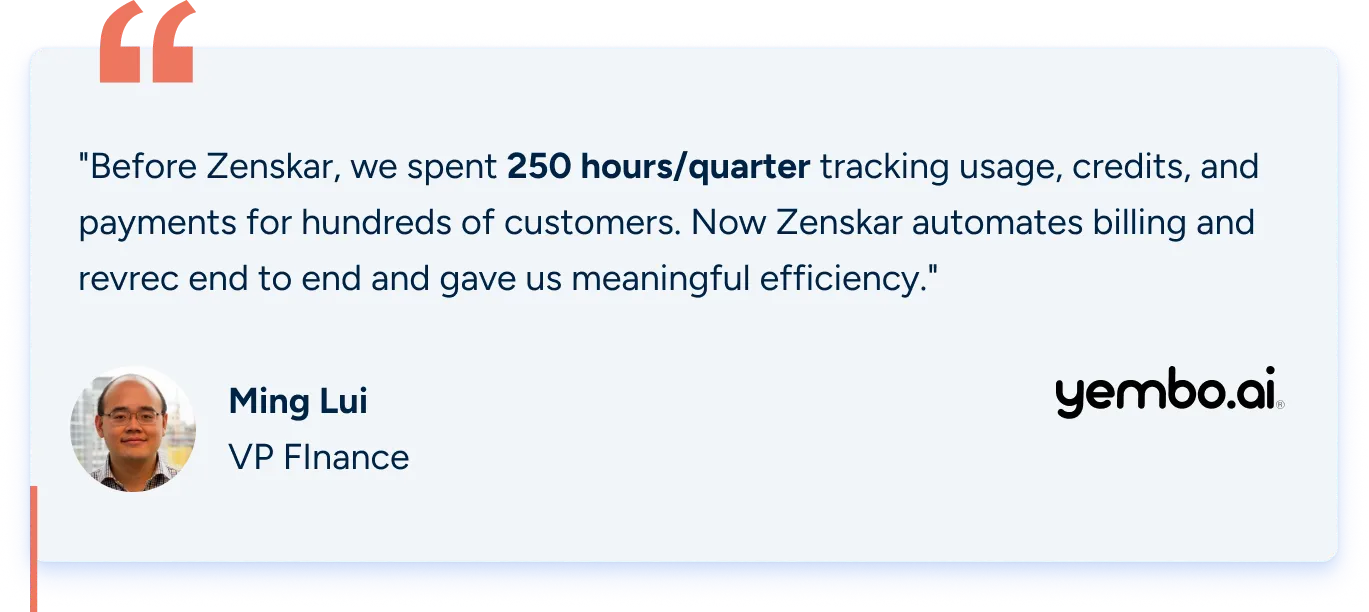How to Close the Gap Between Finance & Sales Inside Your Organization?
%20be%20truly%20invisible_.webp)
I recently came across an HBR article that made perfect sense to me.
In a room full of CFOs, the speaker asked, “How many of you cut the sales team’s forecast every month?”. Every hand in the room went up. It was a striking reminder of how common and accepted the friction between finance and sales has become.
The tension isn’t surprising though. Finance is wired for cost control, discipline, and sustainable profit growth. Sales is wired for revenue growth and incentives. Both functions are vital. Yet the misalignment between them drains time, energy and resources that could instead be spent driving growth.
Organizations that fail to bridge this gap don’t just move slower, they’re outperformed and out-innovated by cross-aligned competitors.
In this blog, we’ll explore why finance and sales teams fall out of sync, why closing that gap matters, and the practical steps you can take to build a lasting alignment.
Finance vs. sales: understanding the divide and its hidden costs
The clash between finance and sales is often dismissed as a personality issue. Finance leaders are seen as trained skeptics who question every number, while sales leaders are the optimists, confident that every promising lead will convert.
But I disagree, the misalignment runs much deeper. It’s not about the personality, it’s about the systems. It’s the conflicting goals, KPI metrics, and incentives that push both teams on opposite sides.
Finance cares about the actual cash flows. It determines liquidity, burn, and runway to keep the company afloat. They’re responsible for ensuring sustainable revenue and profit. They need predictability and stability in growth, to plan better for tomorrow.
Sales, on the other hand, is measured by contracted revenue, and not actual cash collected. Their incentives depend on hitting monthly or quarterly sales targets, and speed is a key. A deal closed today is better than a deal closed next month as it contributes to this month’s sales target.
Imagine your sales team chasing a quarterly new ARR target of $700,000. With just a week left in the quarter, a potential lead agrees to sign a $150,000 ARR deal. This deal would contribute significantly to the ARR target. But there’s a catch. The client wants a 25% discount and net 90 payment terms, if they have to sign the deal before the quarter ends.
For the sales team, this feels like a win:
- It helps them close roughly 20% of their quarterly target in just one deal.
- It gets them commissions for hitting the new ARR target.
But for the finance team, this deal raises red flags:
- A 25% discount would significantly reduce margins and affect profitability.
- Net 90 payment terms would increase account receivables and delay payments till next quarter, affecting cash reserves and runway.
- It would be difficult to uplift revenue from the client later as the low first-price serves as anchor.
Neither team is being unreasonable. They are just responding to the incentives they’re given at work.
Why alignment between finance and sales matters?
1. Stronger forecasting and reduced pipeline waste
When finance and sales teams collaborate, insights that were once stuck in silos start flowing freely, as The CFO highlights. Finance brings financial modelling, forecast rigour, and risk tools. Sales brings real-time market signals and client insights. Together, they can create forecasts grounded in reality. This means better budgeting, more accurate pricing, and focus on high lifetime value clients, reducing sales pipeline waste.
2. Predictable cash collections
When finance and sales teams work together as partners, finance can ensure the deal is structured to support profit growth and has predictable cash flows. Sales can get quicker approval on deals, and shorten their sales cycle.
3. Shared responsibility
Alignment becomes real when both teams share responsibility for the entire revenue cycle from order-to-cash, and not just a part of it. They collaborate right from lead qualification through deal closure and post-sale engagement. Finance gains early visibility into upcoming cash flows, improving predictability. Sales builds stronger client relationships that reduce churn. This results in a shared focus on acquiring the right clients and retaining them for longer.
4. Greater investor confidence
When the CFO and the CRO present a unified front, it signals operational discipline and strategic clarity. Investors see that forecasting is more reliable, execution is coordinated, and the company is focussed on growth. This level of internal cohesion boosts investor confidence.
4 mistakes everyone in finance and sales make
Before we talk about how to close the gap, it’s important to understand the mistakes that fuel misalignment.
1. Working in silos
Finance and sales operate in silos with limited day-to-day interaction. As a result, data across teams becomes fragmented, with each team relying on its own version of truth. Finance may look at ERP data, while sales relies on CRM, and neither sees the full picture. This results in repeated disagreements. The root cause is the lack of a unified source of truth that both teams can trust.
2. Disagreement on KPIs and definitions
Both finance and sales want the company’s revenue to grow. But what revenue means to each of them differs. Finance looks at recognized revenue, in line with accrual accounting. This helps them forecast cashflows, manage runway, and ensure GAAP-compliant financial reporting. Sales, however, looks at booked revenue. Their incentives depend on this metric. The Corporate Finance Institute defines bookings as promises of future revenue and are not recognized as revenue until services are delivered. This means booked revenue has no immediate impact on a company's financial statements.
3. Fostering competition, not collaboration
All teams are held accountable to function-specific KPIs. But when these KPIs conflict, it promotes competition instead of collaboration. Each team prioritizes their own success, even if it comes at the cost of other teams or the organization as a whole. Over time, this reinforces the silo mentality, slows decision making, and makes it difficult for teams to work on shared business goals.
4. Relying on manual order-to-cash workflow
Sales closes a deal and manually enters client details into the CRM. Once the contract is signed, finance manually enters the details into the billing software to manage future cash collections. As the entire workflow, it becomes slow, error-prone, and creates bottlenecks.
The path to finance and sales alignment
Alignment between finance and sales teams can be achieved by changing the systems at the organization level.
1. Unified revenue data
Data is the foundation of alignment. Both teams rely on it to evaluate performance, spot risks, and make decisions. Creating a unified revenue dataset facilitates collaboration. By integrating data across CRM, pipeline tools, billing, invoicing, and collections, you give both teams the same source of truth. This eliminates confusion.
2. Joint planning
Alignment becomes meaningful when teams define why they need to work together. This helps redefine success as company growth, rather than functional wins. Both finance and sales teams move from “my goal” to “our goal”. This builds trust, improves collaboration, and ensures focus on long-term growth.
3. Mutual KPIs
Once goals are aligned, teams need to share metrics that reflect their progress. The metrics must be mutually accepted. If finance focuses on recognized revenue while sales is rewarded for booked revenue, there is no common ground between the teams. Creating a shared KPI glossary with clear and mutually agreed definitions brings consistency. When both teams measure success the same way, it reinforces shared responsibility.
Here’s how a mutual KPI glossary can look like:
4. Automated workflows
Once the foundation is in place, automation keeps the alignment intact. Manual workflows slow down teams, create friction, and require constant back-and-forth. You can use software tools to automate the entire order-to-cash sales cycle at your firm.
5. Feedback loops
Alignment is not a one-time exercise. It is maintained through regular communication. Sales need to share changes in market trends and client expectations to help finance improve forecast accuracy. Finance needs to share margin insights to help sales prioritize key clients. This enables both teams to adapt quickly to changing conditions.
6. Regular alignment and review
Monthly finance-sales syncs help keep the teams refocus on the shared goals, and share their learnings. This helps build alignment into the company culture.
Who owns revenue, and should they?
We focused on aligned finance and sales through the entire order-to-cash cycle so far.
But one important question remains. Who owns the revenue?
Revenue ownership means accountability for revenue targets, pricing, discounts, and payment terms. There are two ways to go about this.
- The CRO (Chief Revenue Officer) owns the entire revenue generation process, be it sales, marketing, or even operations. This reduces data fragmentation across functions, and speedens decision making.
- A shared ownership model distributes revenue responsibility across functions. Here, the CRO can be responsible for revenue generation, while CFO and CRO jointly manage revenue. The CFO-CRO team can revise payment plans for clients, based on client quality (low churn risk). This strengthens collaborative decision making.
There is no right or wrong answer. It depends on what suits your company. This also forces us to examine how finance and sales should collaborate as both contribute to revenue. This raises questions like:
- Should finance dictate discounting and payment terms or should sales lead with flexibility?
- How much financial literacy should a sales person have?
- What about sales acumen for finance managers?
Both teams need to step out of their ‘functional’ comfort zones. Sales need to understand basic finance, while finance needs to understand how sales work. This can help them contribute effectively to the revenue responsibility.
How does Zenskar empower finance and sales to win together?
Zenskar offers the best tech infrastructure to build the finance-sales alignment. With Zenskar, you can:
- Develop a unified source of truth, by integrating CRM, ERP, and billing systems
- Automate billing, collection, and revenue recognition
- Create shared dashboards for finance and sales teams, eliminating constant back-and-forth
Here’s what companies say about Zenskar.


Want to know more? Book a personalized demo today to experience the Zenskar magic.
Frequently asked questions
Finance and sales clash often due to misaligned goals, KPIs, and incentives.
Finance can help sales close deals by enabling faster contract approvals. This can be facilitated by pre-defined checks on pricing, discount, and payment terms.
Integrating data sources to create a unified source of truth and automating workflow helps remove operational bottlenecks between finance and sales.
Zenskar offers tech infrastructure to facilitate finance-sales alignment. It automates the entire order-to-cash workflow.
KPIs for unified finance and sales teams should focus on revenue quality and volume. These can include New ARR, retention rate, gross margin, and customer lifetime value.




























